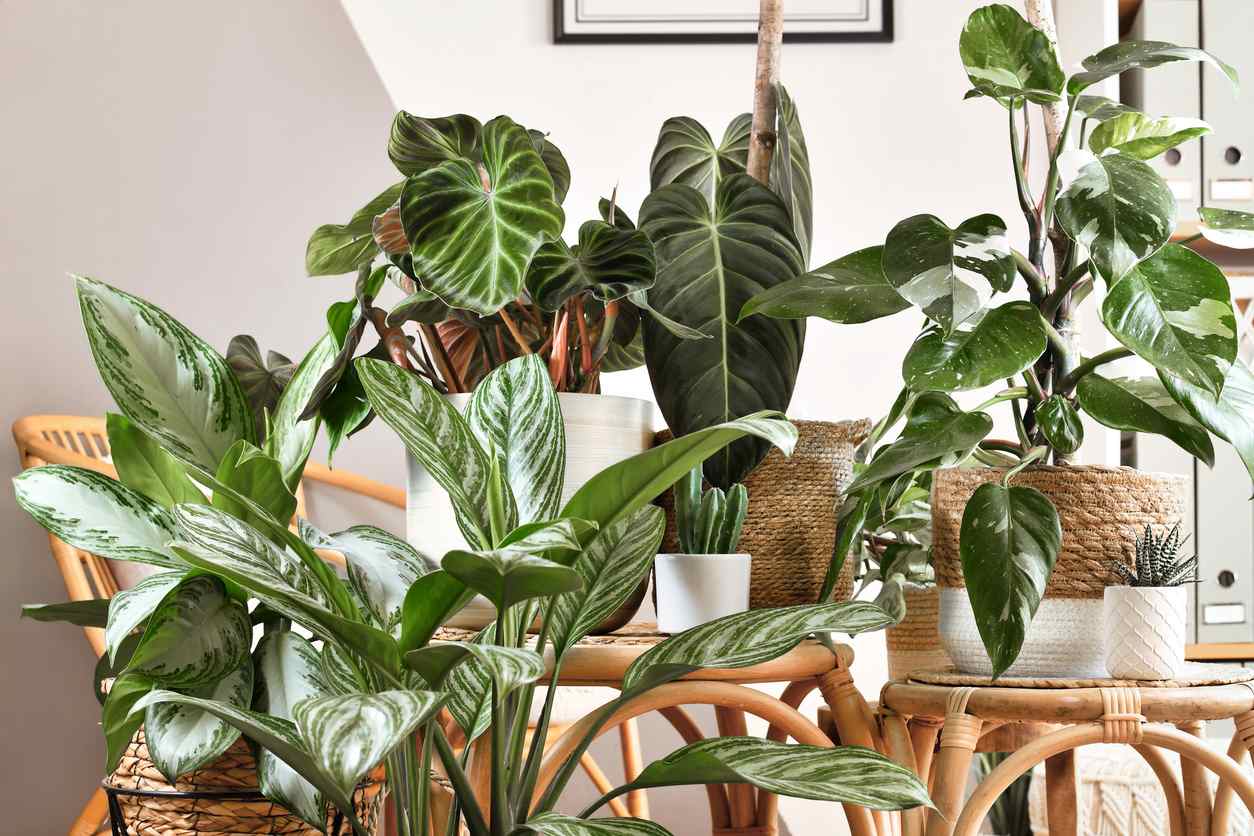
Choosing the right place to store your plants
Some plants are not adapted to the climatic conditions that accompany winter: they are, in fact, more chilly than others and fear excess humidity or wind. It is therefore for their survival to shelter them as soon as bad days arrive. Several options are then available to you:
- For those who are more cautious, you can consider welcoming them into your home during the winter period and only taking them out when all risk of frost has passed and the outside day and night temperatures have risen. If you opt for this option, remember to acclimatize them gradually, both when bringing them in and when taking them out.
- For the less cautious : some plants do not necessarily appreciate being installed in an overheated interior in winter, because they, despite everything, need a certain coolness to go dormant. These less sensitive plants can be installed in a sufficiently bright veranda or garage. Any frost-free space can be suitable for them.
Chilly plants to bring in
Plants that must be brought inside in winter are non-hardy plants, that is to say, plants that freeze as soon as temperatures reach 0°C. If in doubt, do not hesitate to bring your plants inside. For their part, so-called moderately hardy plants tolerate temperatures between between -5 and -8°C. For these, you can use a thick mulch, which will protect their roots, and a winter cover. These solutions can also be useful if you live in an area where the climate remains mild in winter.
Bulb or tuber plants to bring in
If you live in an area where winters are harsh and the ground can freeze deeply, it may be a good idea not to leave the bulbs or tubers in the ground, but to dig them up and store them under cover. This is the case for the following bulbous, tuberous or rhizomatous plants:
- amaryllis;
- the gladiolus;
- the lily ;
- ornamental garlic;
- tuberous begonia;
- daylily;
- the calla;
- the dahlia;
- etc…
In areas subject to extreme cold in winter, it may also be helpful to bring cannas and irises indoors.
Here are the steps to follow to carry out this wintering:
- Pull out the affected plants.
- Let the bulbs dry for at least 24 hours protected from bad weather.
- Remove the soil using a soft-bristled brush.
- Remove damaged roots and dry leaves.
- Finally, store them in wooden crates or cardboard boxes, remembering to write the name of each plant as well as the color.
- Store them in a dark, sufficiently ventilated room, where the temperature remains between 8 and 12°C.
If you grow bulbous plants in a pot, there is no point in pulling them out: you just need to bring the pot away from the cold into an unheated room or premises after having rid the plant of its foliage.
Balcony plants that flower in summer
Generally, summer flowering balcony plants that are grown in containers or pots cannot withstand very low temperatures and need to be sheltered to flourish again in fine weather. This concerns the following plants, among others:
- bougainvillea;
- citrus fruits;
- brugmansia;
- abutila;
- dipladenia;
- fuchsia;
- cassia;
- geranium;
- hibiscus;
- strelitzia;
- oleander;
- etc…
These plants will delight you with their summer flowering, but from the first frost it is imperative to protect them after removing damaged or dry leaves, and removing faded flowers. It’s also time to prune your plant to limit its size.
To store them until the return of fine weather, you can install them in a bright room or room where the temperature remains within between 9 and 11°C. If you don’t have enough space to put them inside, move the pots closer to a wall or wedge them into a wall corner to prevent them from being exposed to winds.
Another precaution to take is to raise the pots to protect the roots from the cold of the soil. You can also wrap the jars in newspaper, bubble wrap, etc. and cover your plants with a winter veil.
Indoor plants
If you have a garden, you can, on sunny days, move your indoor plants outside to a location suited to their needs and after gradually acclimatizing them. They will then benefit from this time outside provided that you do not forget to bring them inside as soon as the temperatures start to drop.
To avoid the risk of damaging them with excessive temperature differences, it is essential not to wait until temperatures, especially at night, become too cool.
Cacti and succulents
Cacti and succulents do not really support indoor growing, because the brightness is not sufficient. They therefore lend themselves perfectly to growing outdoors and appreciate it. Certainly some of these plants are hardy, but in the majority of cases, they will fear frost. You must therefore bring them in as soon as the bad days arrive and install them in a bright, airy and relatively cool room.
Watering overwintered plants
If you keep your plants in a cool room, it will be enough to water them about once a month. In fact, the plants will go dormant and their water needs are then less important.

